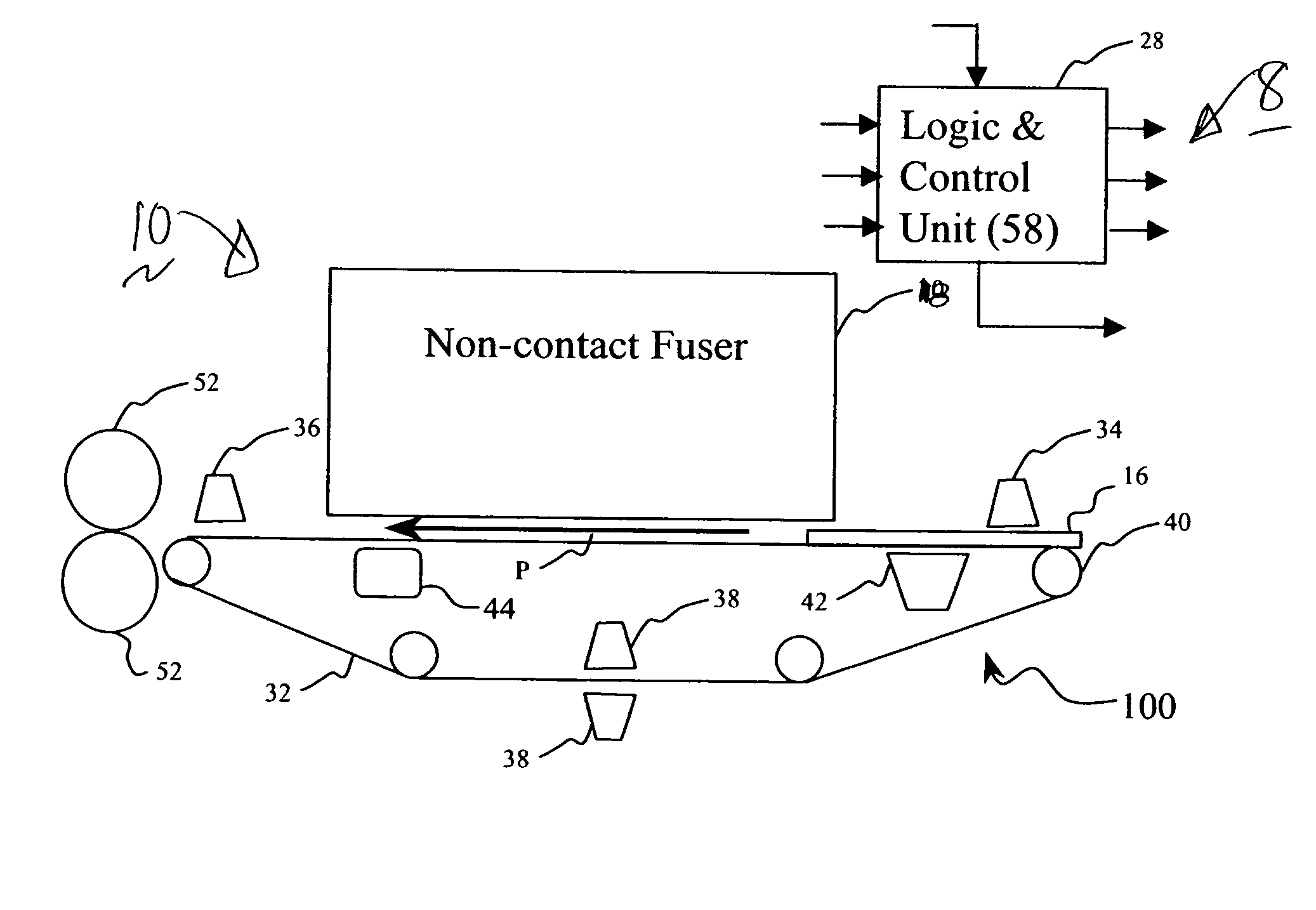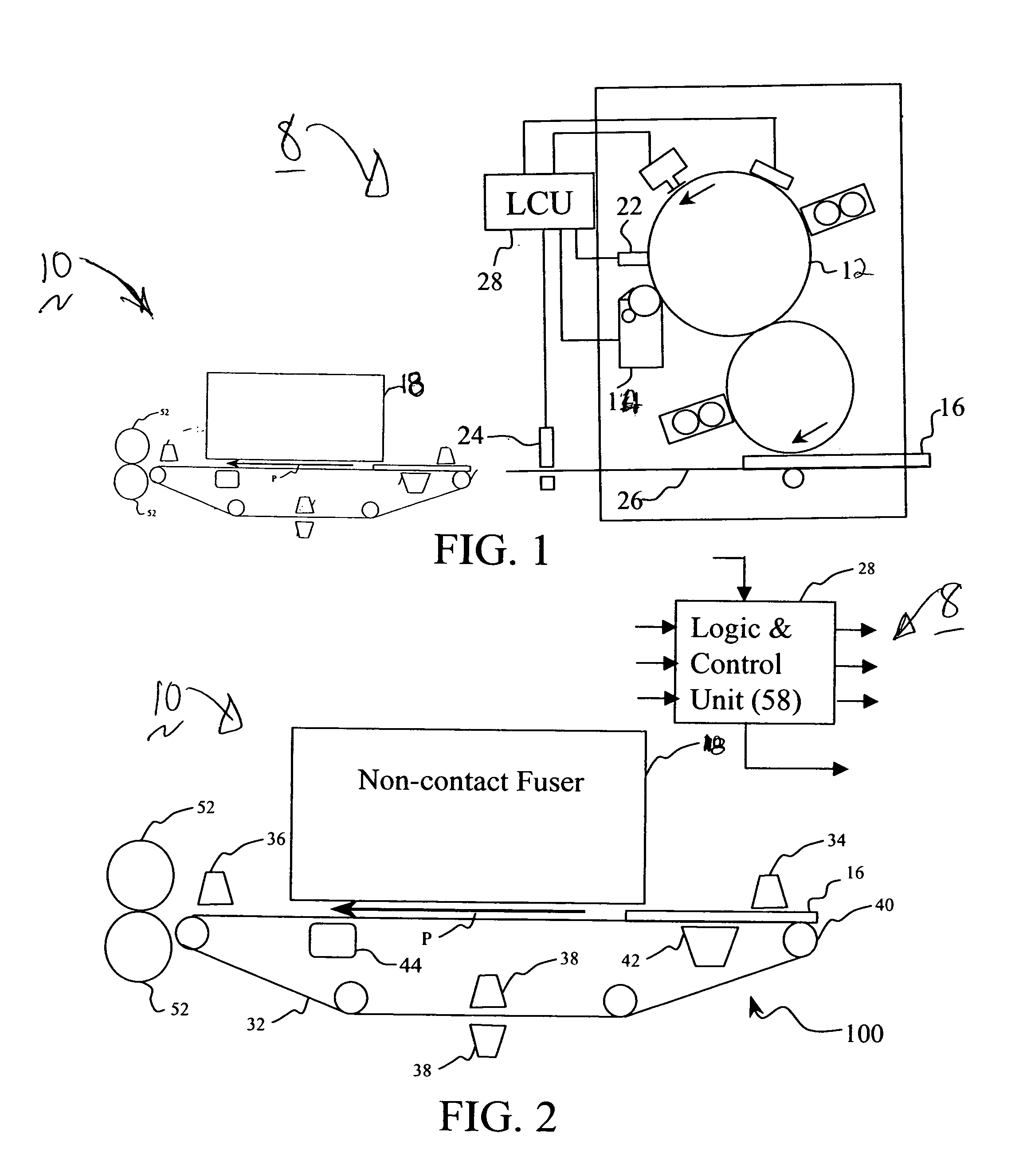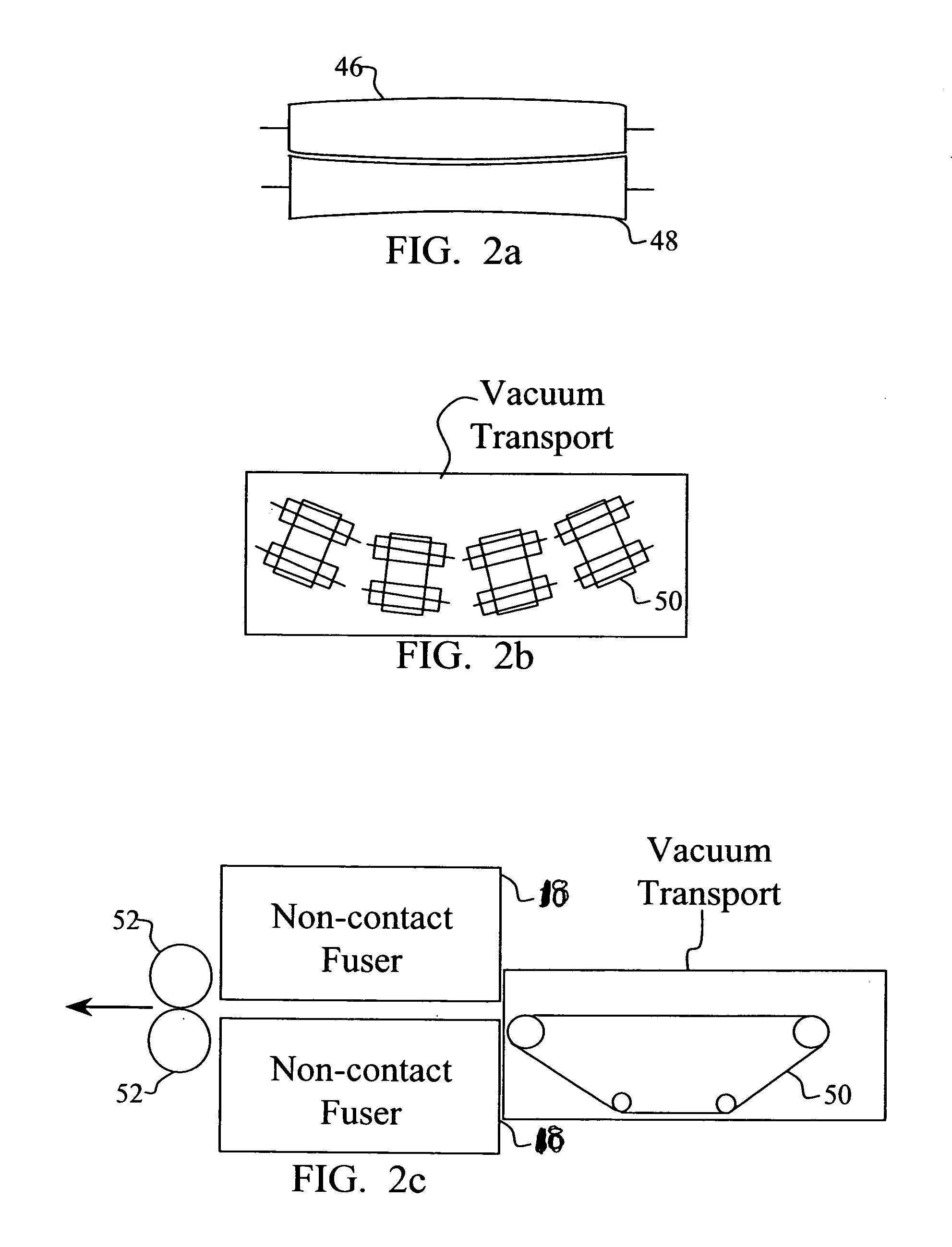Chilled finish roller system and method
a technology of chilling finish and roller, applied in the field of chilling finish roller system and method, can solve the problems of large differences in toner gloss, poor quality, and inability to produce various limitations of non-contact fusing image quality, etc., and achieve the effects of improving the quality of print finish, sharp increase of the modulus of elasticity, and improving color density
- Summary
- Abstract
- Description
- Claims
- Application Information
AI Technical Summary
Benefits of technology
Problems solved by technology
Method used
Image
Examples
Embodiment Construction
[0019]The present description will be directed in particular to elements forming part of, or cooperating more directly with, apparatus and methods in accordance with the present invention. It is to be understood that elements not specifically shown or described may take various forms well known to those skilled in the art.
[0020]FIG. 1, shows generally, schematically, a portion of an electrographic apparatus 8 with a chilled finish roller system 10, generally referred to as an electrographic printer which incorporates a printing system in accordance with the methods and systems described below.
[0021]The electrographic printer 8 includes a moving electrographic imaging member such as a photoconductive drum 12, which is driven by a motor to advance the drum, which advances the receiver 16 in the direction indicated by arrow P. Alternatively, drum 12 may be a belt that is wrapped around a drum or it may be a belt that is wrapped around one or more rollers.
[0022]The electrographic appara...
PUM
 Login to View More
Login to View More Abstract
Description
Claims
Application Information
 Login to View More
Login to View More - R&D
- Intellectual Property
- Life Sciences
- Materials
- Tech Scout
- Unparalleled Data Quality
- Higher Quality Content
- 60% Fewer Hallucinations
Browse by: Latest US Patents, China's latest patents, Technical Efficacy Thesaurus, Application Domain, Technology Topic, Popular Technical Reports.
© 2025 PatSnap. All rights reserved.Legal|Privacy policy|Modern Slavery Act Transparency Statement|Sitemap|About US| Contact US: help@patsnap.com



